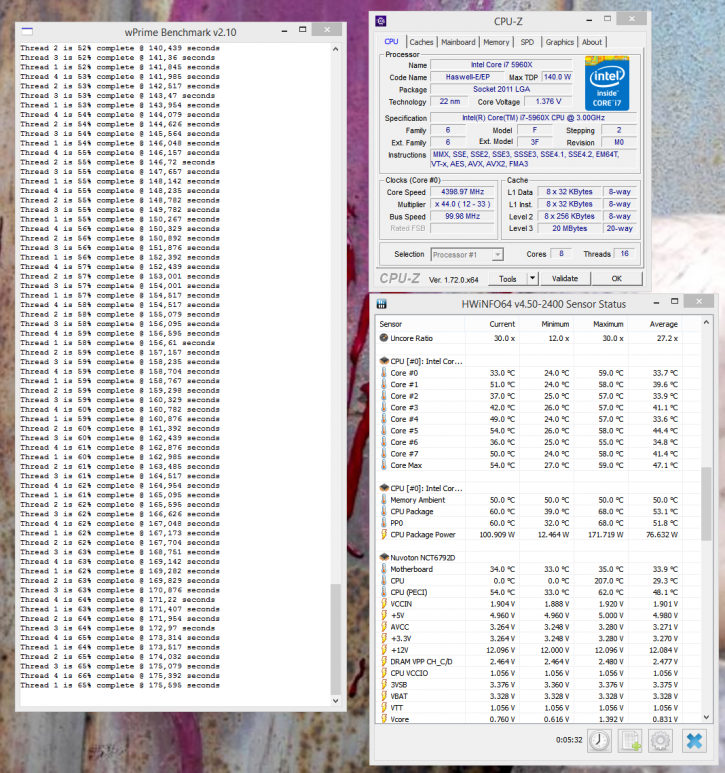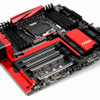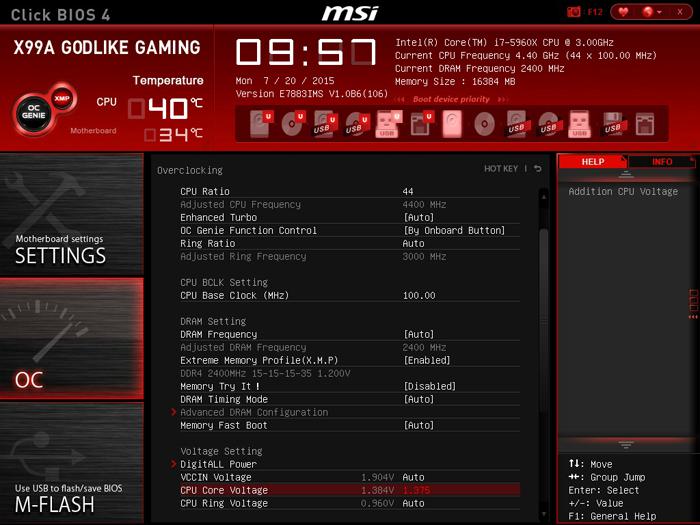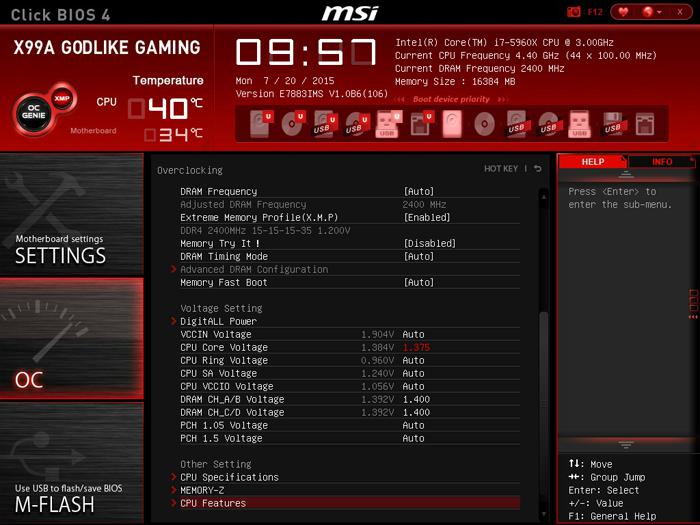Overclocking The Core i7 5960X on X99
Overclocking - The Core i7-5960X on X99
With so much horsepower in the system we cannot resist trying out overclocking. We're keeping it relatively simple. We need to take a couple of steps if we want to overclock. Invest in good hardware by the way, the cheaper motherboards often are not well tuned for enthusiast overclocking. Also get yourself a good power supply and proper processor cooling. Overclocking with Haswell-E was a little more difficult than we expected. Your voltage should sit at roughly 1.3 to 1.4 Volts with an AIO water-cooling, dual rad preferred. Mind you that overclocking 8-cores is a tough job, and our processor sample certainly is not a very good overclocker. The 5960X has a base clock of 3.0 GHz. At 1.3 Volts we end up at roughly 4.0~4.2 GHz. We need a hefty 1.375 ~ 1.425 Volts range to reach 4.4 / 4.5 GHz
Manual Overclocking
The true Guru3D audience overclocks from the BIOS and try to find the maximum stable limit. The generic overclock procedure for multiplier based overclocking is as follows:
- Leave base clock (bus) for what it is right now (if you enable memory XMP at 2400 MHz or higher, your base clock will jump to 125 MHz!).
- If optional in the BIOS, increase your TDP limits of the processor to 250 Watts (by that you are allowing a higher power draw), mostly motherboards have this pre-configured pretty okay these days though.
- Set the per core Turbo multiplier at a maximum of your liking:
- example 2: 100MHz x 44 = 4400 MHz
- Example 2: 125MHz x 37 = 4625 MHz (of you have XMP enabled - you will be defaulted to a 125 MHz bus)
- Increase CPU voltage, though setting AUTO might work fine, we applied 1.3V on the processor to reach 4100 MHz and needed 1.4 Volts to reach ~ 4.5 GHz
- Make sure your processor is properly cooled (we used the Corsair H105 LCS cooler)
- Save and Exit BIOS / EFI
If you enable XMP memory 99% chance that your BUS speed will be altered to roughly 125 MHz - that does change the way you overclock.
Overclocking wise our sample isn't the best, we need a LOT of voltage to reach ~4400 MHz. During overclocking increasing the DDR4 Voltage could help you a bit on stability.
You should allow a baseline clock of roughly 4400 MHz that can actually still throttle down to 1200 MHz in idle, which helps us in power consumption. However, once the processor gets a kick in the proverbial nuts, it can turbo any or all cores towards that multiplier of 44 times that 100 MHz baseclock frequency, that's a 4400 MHz configuration.

Here is an example at 4400MHz - temps remain fairly OK for an 8-core proecessor and merely a Corsair H105 LCS cooler.
Above a quick look with a Prime95 stress test with all four cores active and stressed at almost ~4400 MHz. You'll need a rather reasonable cooler, eight-cores versus overclocking require a higher-voltage, and that creates more heat to deal with.



